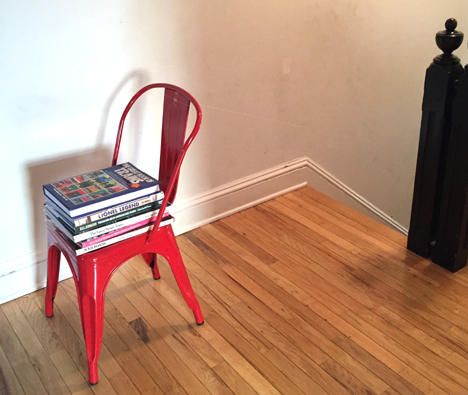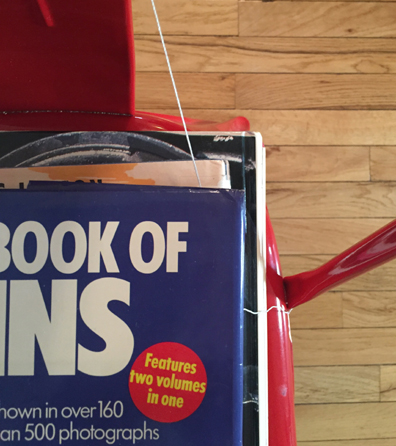 Bring on the color, fun, decorations, and wheels…the jingle trucks are here! Author Hinna Shahid visited our library’s story time, and brought her two fantastic books to share: My First Jingle Truck, and Riding on a Tuk Tuk (Vah Masti Books, 2022). Both of these wonderful books take the reader on a journey through the landscapes and culture of South Asia. Hinna brought six signed copies to give away, which was amazing!
Bring on the color, fun, decorations, and wheels…the jingle trucks are here! Author Hinna Shahid visited our library’s story time, and brought her two fantastic books to share: My First Jingle Truck, and Riding on a Tuk Tuk (Vah Masti Books, 2022). Both of these wonderful books take the reader on a journey through the landscapes and culture of South Asia. Hinna brought six signed copies to give away, which was amazing!
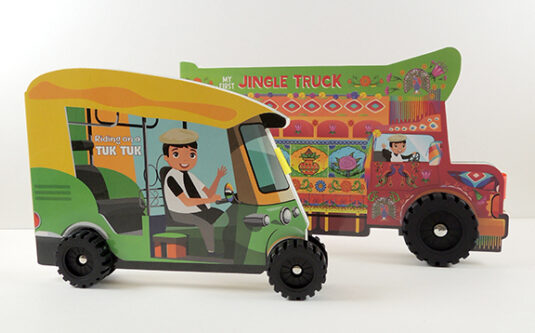 Jingle trucks are famous in South Asia for their elaborate patterns, details, calligraphy, and paintings. Each truck is unique to the driver, and represents pride in their work as well as their dedication to beauty. The truck’s dangling chains earn them their famous name. A tuk tuk is a smaller three-wheel truck, used for zipping around the roads quickly.
Jingle trucks are famous in South Asia for their elaborate patterns, details, calligraphy, and paintings. Each truck is unique to the driver, and represents pride in their work as well as their dedication to beauty. The truck’s dangling chains earn them their famous name. A tuk tuk is a smaller three-wheel truck, used for zipping around the roads quickly.
We decided to bring Hinna’s book to life by decorating step-inside jingle trucks! Our trucks were white office file boxes. We cut the bottoms out, then used that extra cardboard to fashion the cab of the truck. A pair of ribbons tied to the handles of the box acted as suspenders to hold the truck in place. Then we brought TONS of decorating supplies out of our art cabinets.
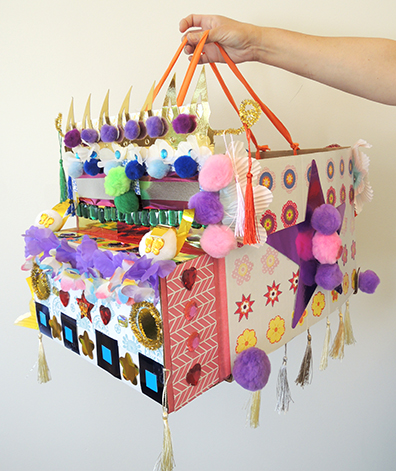 The biggest hit were bookmark tassels left over from this event. I also learned that many jingle trucks have “Horn Please” signs on the back. So I created those as well!
The biggest hit were bookmark tassels left over from this event. I also learned that many jingle trucks have “Horn Please” signs on the back. So I created those as well!
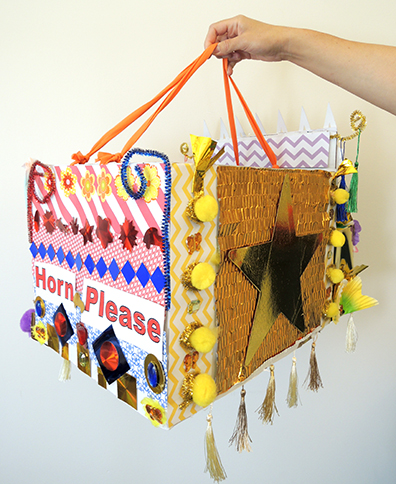
The office filing boxes we used were a bit of a splurge (a package of 20 costs $50 on Amazon. However, copy paper boxes work as well if you have room to store them. The boxes fit drivers of every size:
Large…
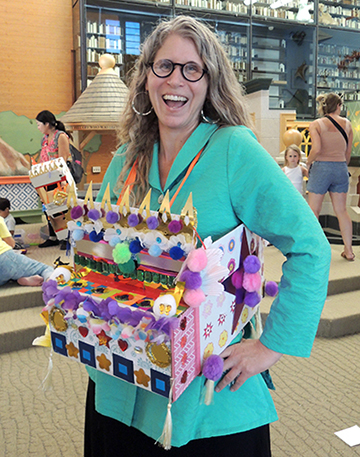 Medium…
Medium…
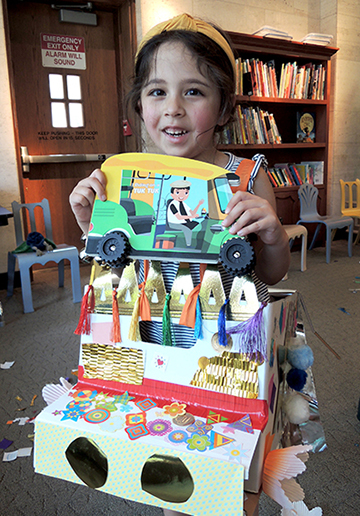 And small!
And small!
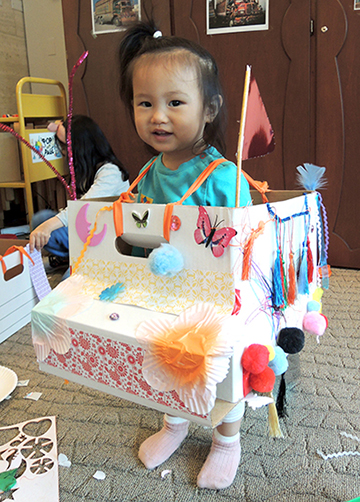 When the trucks were complete, Hinna handed out jingle bell bracelets to each driver (again, purchased on Amazon, a box of 48 were $33). To keep your budget low, you can buy packs of individual jingle bells (typically a pack of 50 runs about $6) and hand out just a few per driver.
When the trucks were complete, Hinna handed out jingle bell bracelets to each driver (again, purchased on Amazon, a box of 48 were $33). To keep your budget low, you can buy packs of individual jingle bells (typically a pack of 50 runs about $6) and hand out just a few per driver.
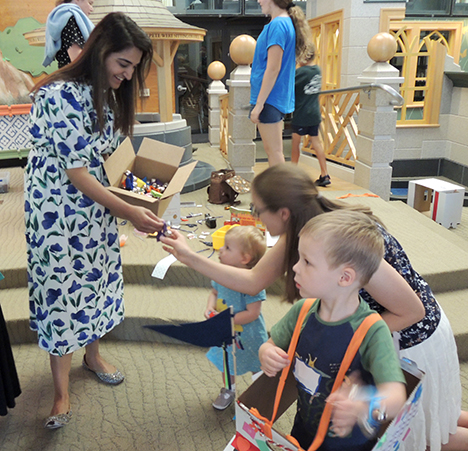 After rush hour ended, I caught up with Hinna to chat about her awesome books!
After rush hour ended, I caught up with Hinna to chat about her awesome books!
Please tell us a little about yourself!
I am a Physician Scientist working in the healthcare industry and a mother to a 3-year-old toddler residing in New Jersey.
Both of your books My First Jingle Truck and Riding on a Tuk Tuk were released in 2022. How did these books come about?
My upbringing involved extensive travel around the world, with one of my favorite destinations being my grandparents’ home in Pakistan during the summer. During those trips, I was fascinated by the multitude of three-wheel vehicles known as Auto Rickshaws and the vibrant, hand-painted Trucks that adorned the roads. Among my cherished childhood memories is the joy of riding with my grandmother on a Tuk Tuk to explore the local bazaar. The experience of zipping through the narrow streets, feeling the wind in my hair, and being enchanted by the delightful aroma of spices is something I still hold dear.
As I witnessed my own son growing up in the United States, I wanted to share my childhood reminiscences with him by reading books together. However, during the COVID pandemic, while searching online, I was unable to find a book that captured those memories. This inspired me to embark on a journey as a children’s book author, which began about two years ago. As a determined mother on a mission, I set out to share my treasured recollections of South Asia with the world.
Your books are on wheels! That’s fantastic! How did you decide to add those?
In my quest to introduce my son to the rich tapestry of South Asian culture in an enjoyable manner, serendipity struck during a family trip to London. There, I came across books equipped with wheels, and a creative idea took shape in my mind. Inspired by this discovery, I resolved to incorporate wheels into the books, transforming them into captivating and interactive pieces for young readers.
Are there any illustrations or locations in the books that are significant to you?
Within the pages of the two books, numerous stops and locations hold significance as they are drawn from a blend of my cherished childhood memories and recent journeys to India and Pakistan. Among these, Agra, India, holds a special place in my heart, for it is there that the awe-inspiring beauty of the Taj Mahal was brought to life.
What are you working on now?
I am currently immersed in several exciting projects for my next books. At the moment, I am exploring captivating new themes and storylines that will engage young readers and spark their imaginations. I’m also delving into more diverse cultures and settings, aiming to introduce children to different parts of the world through the magic of storytelling. Stay tuned for more updates and exciting developments from me as a children’s book author. There are wonderful adventures and heartwarming tales waiting to be unveiled. Your continued support and interest mean a lot, and I can’t wait to share these new stories with you soon!
Many thanks to Hinna Shahid for coming to our library and donating books to our library visitors! See you on the road!


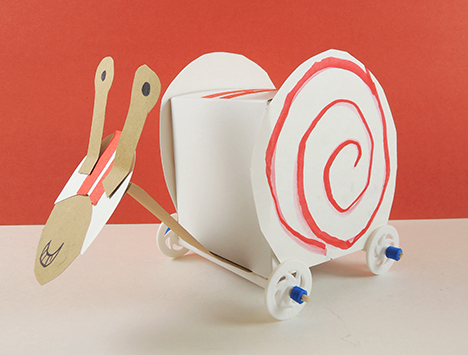 The snail part of this project is very simple. Decorate 2 poster board snail shells and attach them to both sides of a small box. To make the snail’s head and neck, round one end of an 8″ strip of poster board, then fold to create a head. Don’t forget the eye stalks! We also added a paper racing helmet, but that is optional. Tab the other end of the strip and attach it to the underside of the box.
The snail part of this project is very simple. Decorate 2 poster board snail shells and attach them to both sides of a small box. To make the snail’s head and neck, round one end of an 8″ strip of poster board, then fold to create a head. Don’t forget the eye stalks! We also added a paper racing helmet, but that is optional. Tab the other end of the strip and attach it to the underside of the box.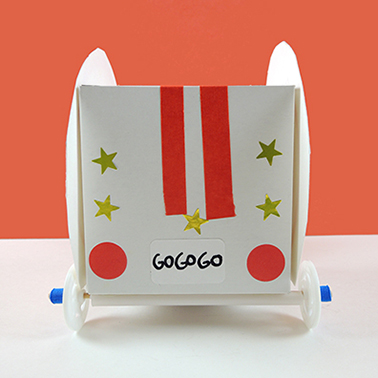 Now to get your snail moving! We thought an RC snail rally would be super awesome, so I made a quick trip to Jazams, our local toy store. I found these RC trucks for $17.
Now to get your snail moving! We thought an RC snail rally would be super awesome, so I made a quick trip to Jazams, our local toy store. I found these RC trucks for $17.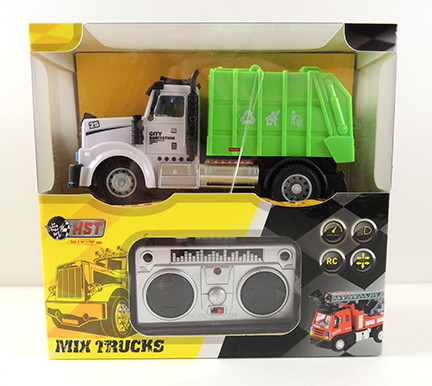 One quick note: You’ll notice that the RC truck in the picture above has a nose that sticks out. There was another box, exact same recycling truck, except it had a flat front (see below). Turns out the truck with the flat front held the snail box MUCH better. So aim to find a flat front truck if at all possible!
One quick note: You’ll notice that the RC truck in the picture above has a nose that sticks out. There was another box, exact same recycling truck, except it had a flat front (see below). Turns out the truck with the flat front held the snail box MUCH better. So aim to find a flat front truck if at all possible!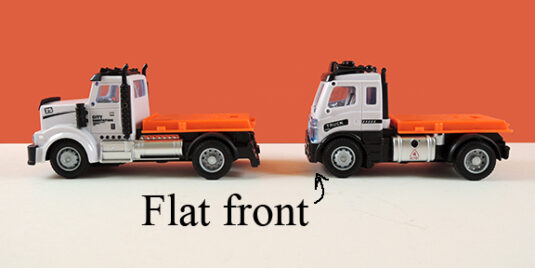 I removed the green recycle section from the back of the truck, cut a hole in the bottom of each snail box, and then slid the snail onto the cab of the truck like so:
I removed the green recycle section from the back of the truck, cut a hole in the bottom of each snail box, and then slid the snail onto the cab of the truck like so: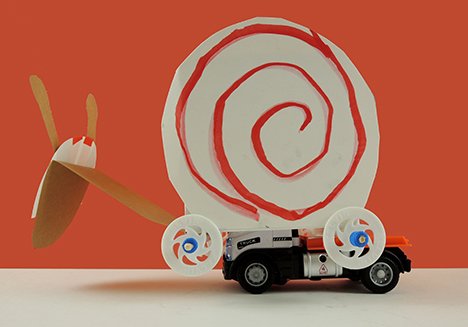
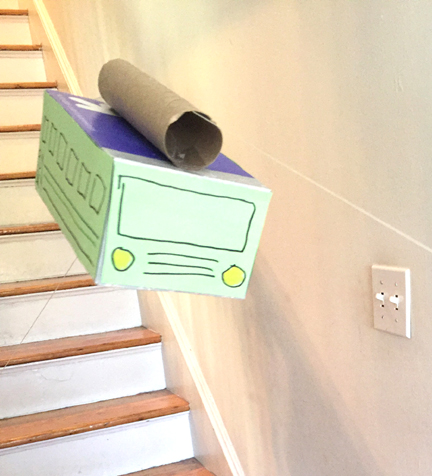
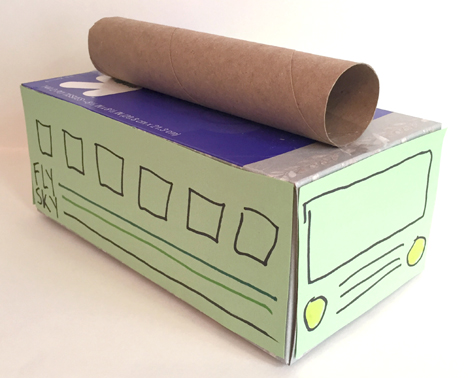 Next, turn the box on it’s side and punch a hole in the back. Knot a 15-24″ string through the hole. This is the string that your kid will use to pull the tram car up and down the zip line. Otherwise, it’s going to be YOU doing it. Probably the very moment you are trying to get lunch on the table while answering work texts during a Zoom meeting while also searching for your daughter’s lost LEGO figurine.
Next, turn the box on it’s side and punch a hole in the back. Knot a 15-24″ string through the hole. This is the string that your kid will use to pull the tram car up and down the zip line. Otherwise, it’s going to be YOU doing it. Probably the very moment you are trying to get lunch on the table while answering work texts during a Zoom meeting while also searching for your daughter’s lost LEGO figurine.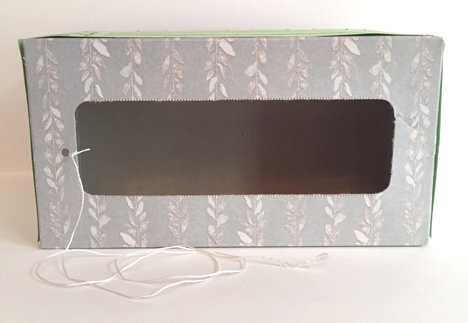 Next comes the zip line! I used kite string, but we tested yarn and it works as well. We rigged our zip line on stairs, but a tree in the yard or a tall chair & shorter chair works too. Two very important things: WEIGH BOTH CHAIRS DOWN WITH BOOKS. There will be quite a bit of kid traffic on and around the zip line. Weighing both chairs reduces the chance of nudging or tipping.
Next comes the zip line! I used kite string, but we tested yarn and it works as well. We rigged our zip line on stairs, but a tree in the yard or a tall chair & shorter chair works too. Two very important things: WEIGH BOTH CHAIRS DOWN WITH BOOKS. There will be quite a bit of kid traffic on and around the zip line. Weighing both chairs reduces the chance of nudging or tipping.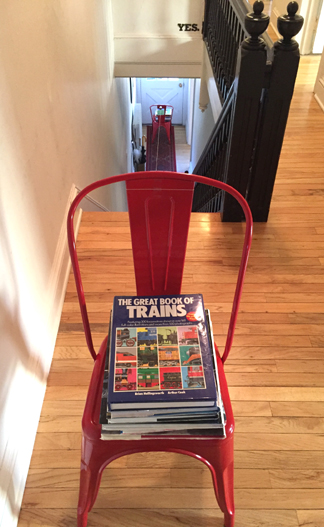 Next very important thing: if you are doing this on a stair case, SET BOTH CHAIRS BACK FROM THE STAIRS. Especially if you have two or more kids. You don’t want anyone falling down, or tripping up, the stairs. Below is the minimum I would set the chair from the top of stairs. More so for younger kids and.or multiple kids.
Next very important thing: if you are doing this on a stair case, SET BOTH CHAIRS BACK FROM THE STAIRS. Especially if you have two or more kids. You don’t want anyone falling down, or tripping up, the stairs. Below is the minimum I would set the chair from the top of stairs. More so for younger kids and.or multiple kids.